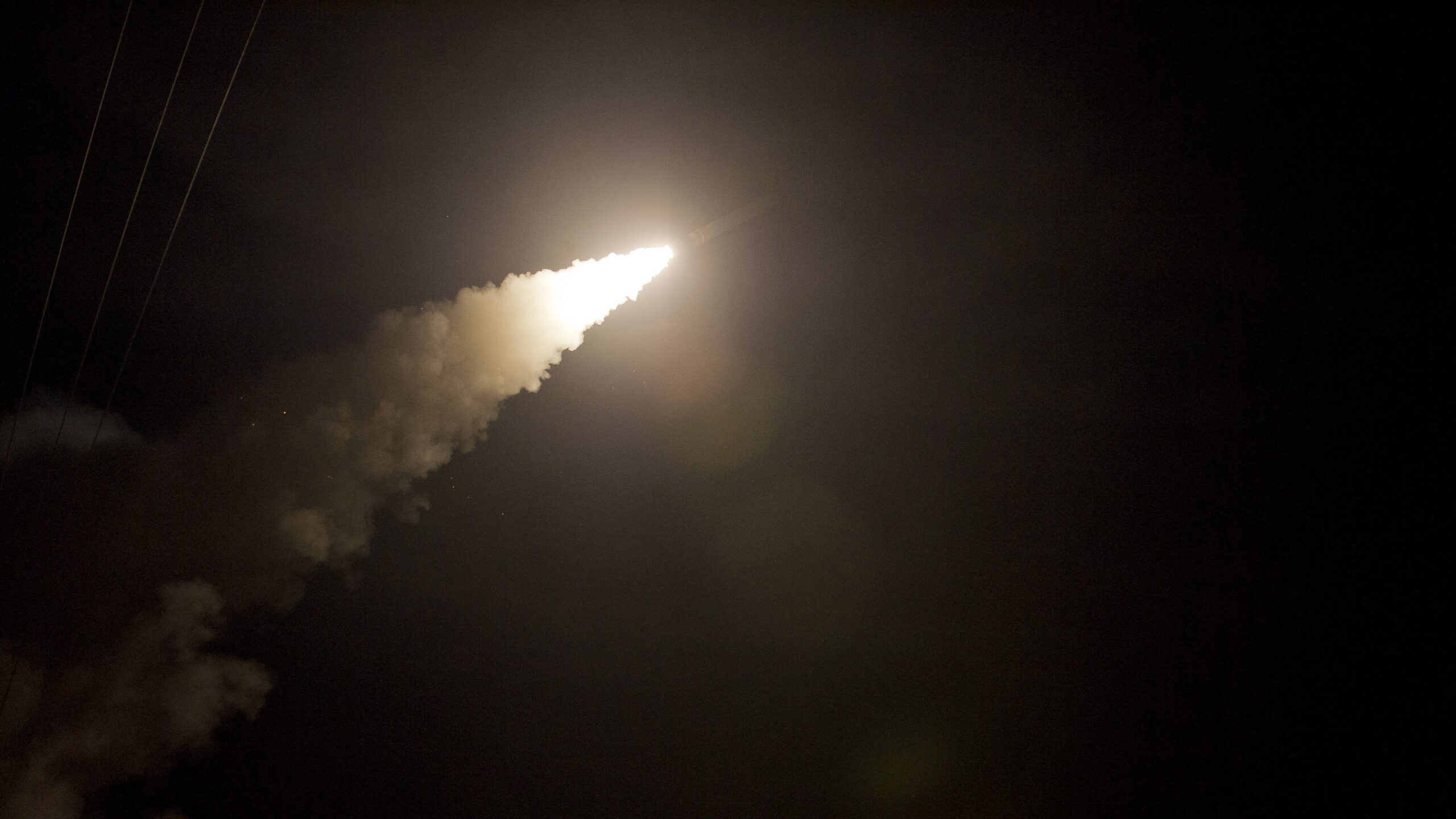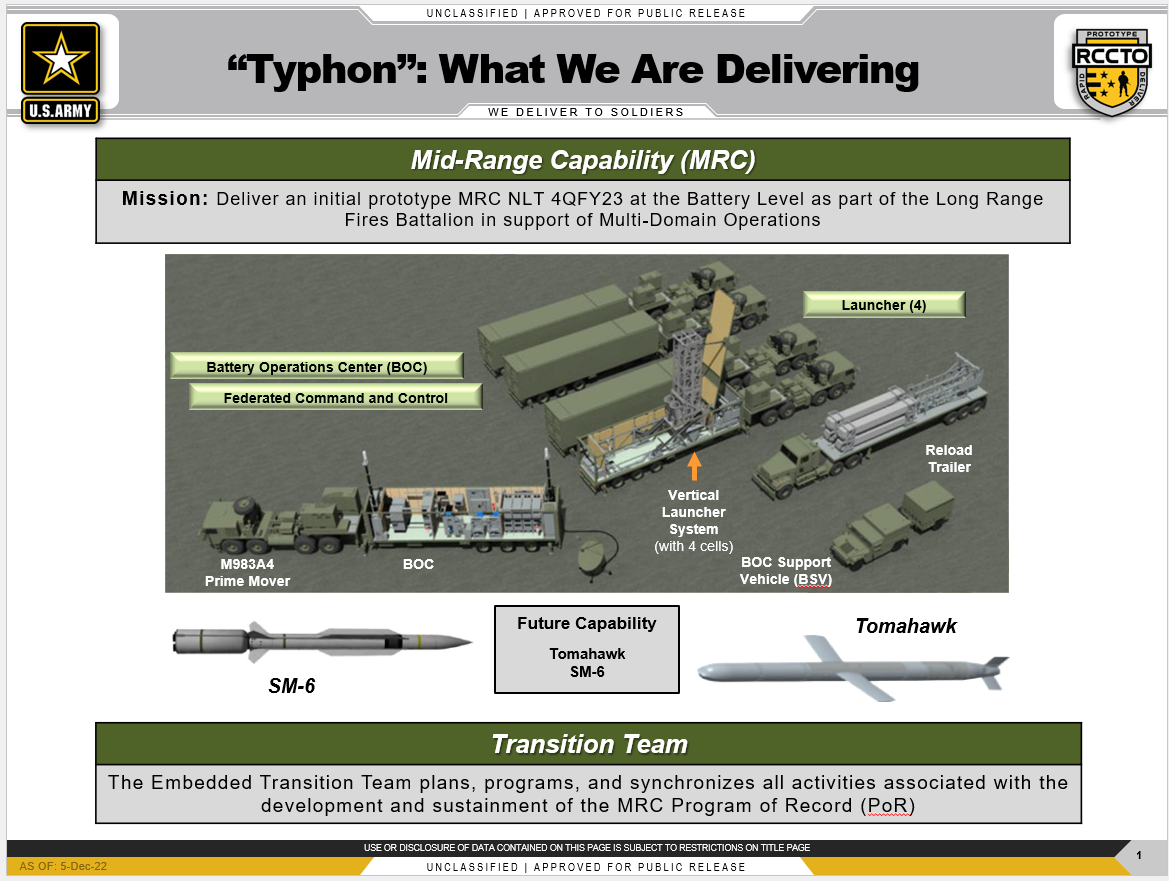
The guided-missile destroyer USS Arleigh Burke (DDG 51) launches tomahawk missiles in this photo. The Army’s Typhoon system is designed to launch tomahawks as well. (U.S. Navy photo by Mass Communication Specialist 2nd Class Carlos M. Vazquez II/Released)
WASHINGTON — Lockheed Martin recently delivered to the US Army the first of four prototype Typhon weapon systems, one of several systems the service is developing as part of its long-term plan for long-range precision fires.
Also dubbed the Mid-Range Capability (MRC), Typhon is designed to fire Standard Missile-6 or Tomahawk missiles around the range gap between the Precision Strike Missile and the Long-Range Hypersonic Weapon. The former reaches approximately 300 miles while the latter is envisioned to travel up to 1,725 miles.
“The MRC rapidly progressed from a blank piece of paper in July 2020, to the soldiers’ hands in just over two years. The [Rapid Capabilities and Critical Technologies Office] team, as well as our joint service and industry partners, delivered this hardware so soldiers can begin training as quickly as possible,” said Lt. Gen. Robert Rasch, a senior officer overseeing the weapon’s development at RCCTO.
The delivery took place on Friday, and Lockheed announced the milestone today.
The Army selected Lockheed to build the weapon system in November 2020, and earlier this year the service and company announced that four prototypes would be delivered by the end of 2022. MRC is expected to be fielded to soldiers late next year. Meanwhile, the LRHW is scheduled to reach soldiers’ hands by the end of fiscal 2023, Rasch said earlier this year during the AUSA exposition.

A US Army slide depicting the Mid-Range Capability and all of its elements. (Slide courtesy of US Army)
Lockheed’s partnership with the Army “enabled us to leverage technologies across our ships, launchers and combat systems programs to design, develop, integrate and quickly deliver a solution to meet the Army’s mission requirements,” said Joe DePietro, Lockheed general manager and vice president. “We created new capabilities through integration of existing and evolving technology to ensure our warfighters are ahead of ready.”
The service’s current plans call for fielding one MRC battery in the strategic fires battalions of its five Multi-Domain Task Forces. The Army in its fiscal 2023 budget request is seeking $404 million in research and development funding for the MRC.
The defense policy and spending bills had been stalled on Capitol Hill as lawmakers awaited the results of the mid-term elections, but Rep. Adam Smith said the House will vote on the final National Defense Authorization Act this week.
Move over FARA: General Atomics pitching new Gray Eagle version for armed scout mission
General Atomics will also showcase its Mojave demonstrator for the first time during the Army Aviation Association of America conference in Denver, a company spokesman said.


























